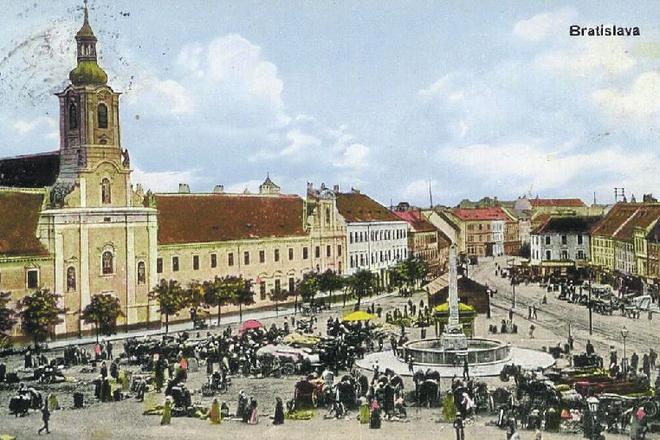THIS colourised photograph of Bratislava’s SNP Square, which dates back to 1912, is a beautiful example of how this city once looked, and how it has gradually grown. The area on which this square lies used to be just an empty space lining the outside of the city walls. Only the vast complex of a monastery, a hospital and a church stood there – which can be seen on the left side of the postcard.
Pavol Pigler from Vienna came up with the idea to build the complex there. In 1669, he managed to obtain the approval of Esztergom Archbishop Juraj Szelepcsény to build a charitable operation of his holy order on the territory of Bratislava, then called Pressburg. The original plan gradually became increasingly ambitious, and ultimately, a spacious monastic complex including the Church of the Visitation of the Virgin Mary and the hospital was built.
However, in the 1680s, the church paid a price for its location outside the city walls. It was burned down by Ottomans who, together with Thököly’s armies, invaded Pressburg’s suburbs. In 1692,
construction started again and was finally completed between 1723 and 1728, in the Baroque style.


